As I wandered through the sunlit plazas and grand palaces of Úbeda and Baeza, I felt like I’d been whisked back to the Spanish Renaissance. Both towns, now UNESCO World Heritage Sites, show off their well-preserved architecture and have stories tucked around every corner.
Exploring these historic gems let me stroll streets where noble families once lived. I could almost picture myself as Renaissance royalty for a day.
With each step, impressive stone buildings and elegant squares like Plaza Vázquez de Molina in Úbeda popped up before me. I slowed down to take in the old façades and quiet courtyards—there’s something about the artistry here that just grabs you.
Honestly, these cities feel alive with history. Every alleyway seems to have a story.
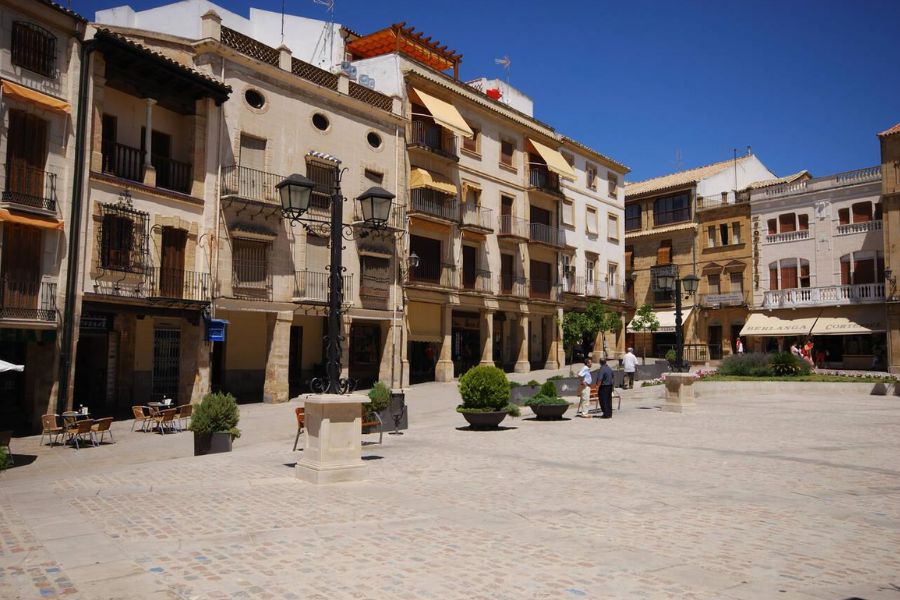
If you’ve ever wanted to step into the past or just crave a taste of Andalucía beyond the usual crowds, Úbeda and Baeza have that rare blend of charm, history, and warmth. Their peaceful streets and friendly locals turn a simple walk into a mini adventure. For anyone even a little curious about Spain’s Renaissance legacy, these places are a treat.
Wander Through Úbeda: Palaces, Plazas, and Timeless Streets
Úbeda greets you with Renaissance façades and cobbled streets at every turn. Ornate palaces, ancient walls, and distant olive groves all shape the town’s character.
Every step reveals a mix of beauty, history, and everyday Spanish life. It’s never boring.
Renaissance Architecture and the Spirit of 16th Century Úbeda
Walking into Úbeda, I felt like I’d stepped straight into the 1500s. Plaza Vázquez de Molina instantly caught my eye—this main square is surrounded by Renaissance buildings in that soft golden stone that just glows in the sunlight.
I stopped outside the Palacio de las Cadenas, where grand columns and detailed ironwork show off the 16th-century craftsmanship.
As I wandered the streets, churches and noble homes popped up, quietly reminding me of the town’s golden age. The Santa María de los Reales Alcázares sits right at the center, with its blend of Gothic and Renaissance elements.
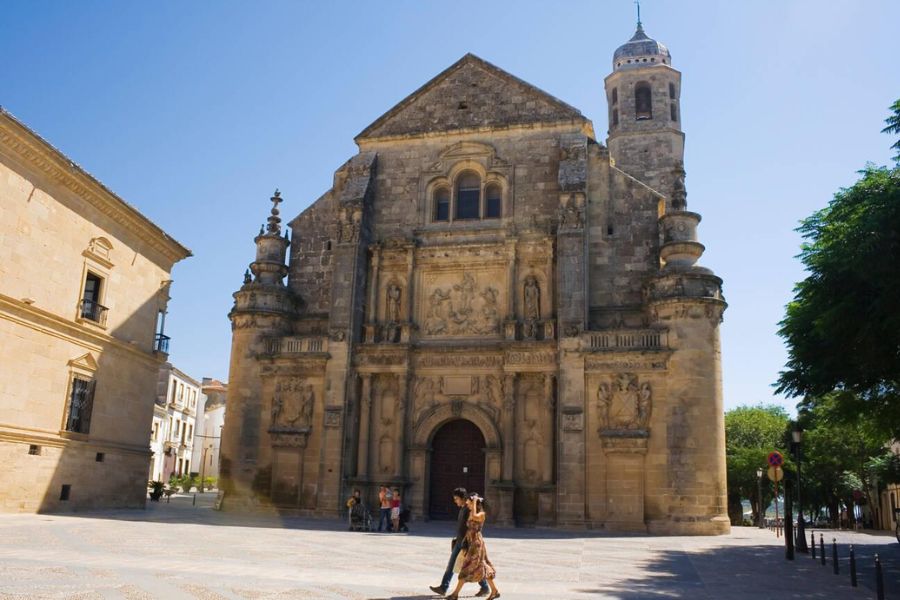
Standing in these plazas, I could almost see the nobility, artists, and townsfolk from centuries ago.
Exploring the UNESCO World Heritage Site and Walled Towns
Úbeda and nearby Baeza hold UNESCO World Heritage status for good reason—their Renaissance heritage and preserved monuments are just incredible. I explored stretches of the old city walls, which wrap around a maze of narrow lanes, open courtyards, and lively plazas.
The history here feels almost tangible. Many of Úbeda’s palaces and churches welcome visitors. I found guided tours running regularly, perfect for anyone wanting to dig deeper into the stories behind these stones.
Even when I wandered solo, I bumped into detailed plaques and info boards all over. They pointed out the historical role of each site, from bishops’ palaces to merchant houses.
Hidden Corners: Olive Groves, Hinterland Views, and Urban Landscapes
Heading toward the edge of Úbeda, I found some quiet spots where the city meets the countryside. From certain viewpoints, olive groves stretch out forever, their silvery leaves shimmering in the sunlight.
Sometimes, a faint olive scent drifted into town on the breeze. I really recommend exploring hidden corners away from the main squares.
Narrow alleys lead to small plazas, local bakeries, or shaded benches just right for a pause. Early mornings were my favorite—wandering while the city was still waking up, hearing only footsteps and distant church bells.
It’s a peaceful way to start the day.
Baeza’s Living History: From Medieval City to Cultural Beacon
Walking into Baeza, I felt like I’d entered another era. Grand architecture rises above cobbled streets, and the spirit of old Spain seems to whisper from every stone.
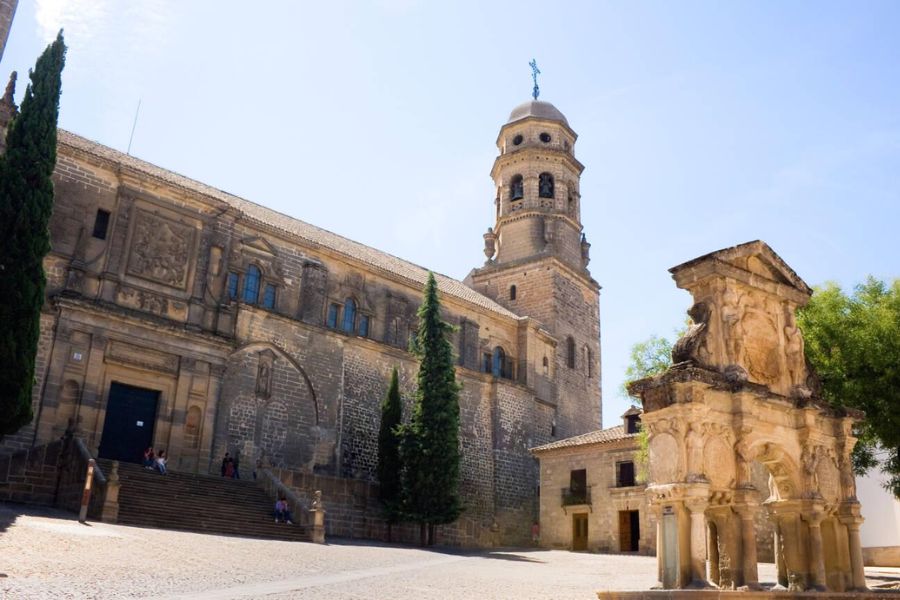
From its UNESCO-listed monuments and lively squares to its peaceful cathedrals, Baeza still lives and breathes its layered past.
The World Heritage Charm of Baeza
I could see right away why Baeza is a UNESCO World Heritage Site. The city has kept its Renaissance legacy in almost perfect shape.
Elegant palaces line the main streets, their sandstone facades glowing gold in the afternoon sun. A stroll through the center took me past noble mansions and the Ayuntamiento (Town Hall), where carvings and stately columns hint at the city’s influential past.
Baeza isn’t just a snapshot in time—locals and visitors fill the quiet streets, giving the city real energy.
I found cafés tucked under old arches, the smell of fresh bread mixing with the thrill of discovering secret corners. For travelers who want Spanish heritage, Baeza delivers art, architecture, and authentic daily life all in one place.
Plaza Mayor and Other Ancient Plazas
Baeza’s plazas have centuries of stories built into them. Plaza del Pópulo, also called Plaza de los Leones for its lion fountain, stands out for its historic buildings and lively vibe.
I loved grabbing an outdoor table and watching locals cross the square, framed by the old Notary House and that striking public fountain. Plaza Mayor is another gem. Its arcades, cafés, and shaded spots make it welcoming, even on the hottest days.
Here’s a quick reference for Baeza’s top plazas:
| Plaza Name | Main Highlights |
|---|---|
| Plaza del Pópulo | Lion Fountain, historic buildings, cafés |
| Plaza Mayor | Arcades, local shops, community events |
These plazas are where medieval and modern life meet.
Sacred Sites and the Holy City Mystique
Baeza once thrived as a “holy city,” thanks to its grand religious sites and deep spiritual traditions. My favorite spot was the Baeza Cathedral (Catedral de la Natividad de Nuestra Señora).
It’s an elegant mix of Gothic and Renaissance design that towers above the city. Inside, I walked under high vaulted ceilings and admired altarpieces glowing in candlelight.
The cathedral’s peaceful cloisters offered a perfect break from the city’s noise. Across town, smaller chapels and convents hinted at Baeza’s medieval devotion—San Andrés and Santa Cruz churches stood out to me.

Each sacred stop reveals part of Baeza’s long story—a city where faith, art, and history still shape daily life. For anyone fascinated by religious heritage, these sites are woven into every visit.
Tracing the Footsteps of Renaissance Royalty and Influential Figures
As I wandered the cobbled streets of Úbeda and Baeza, echoes of creative genius and royal grandeur seemed to pop up everywhere. These towns don’t just show off history—they bring Spain’s cultural and artistic legacy to life.
Miguel de Cervantes, Don Quixote, and Literary Legacies
Exploring Baeza’s quiet squares, I couldn’t help but picture Miguel de Cervantes himself wandering these paths. Cervantes, famous for Don Quixote, has links to these towns through legends and real visits.
Stories suggest the old inns and plazas may have inspired scenes in his novel. Don Quixote is one of the greatest works of fiction, with a reach that goes way beyond Spain.
Monuments and plaques in Úbeda and Baeza honor Cervantes, turning the towns into living museums of literary history.
If you’re into this stuff, I’d suggest joining a guided walking tour. The guides here love pointing out spots linked to Cervantes and sharing how these places shaped some of his stories.
Spanish Theatre: Calderón de la Barca and the Golden Age
Úbeda and Baeza carry the spirit of Spanish theatre, thanks to Pedro Calderón de la Barca. Calderón’s plays, especially those from Spain’s Golden Age, still influence performances today.
Historic theatres and grand salons in these towns host plays and community events. Every year, the towns celebrate this heritage with theatre festivals.
During my visit, I watched local actors perform a Calderón play in a Renaissance courtyard. The setting made the story come alive—it almost felt like I’d been invited to a royal show.
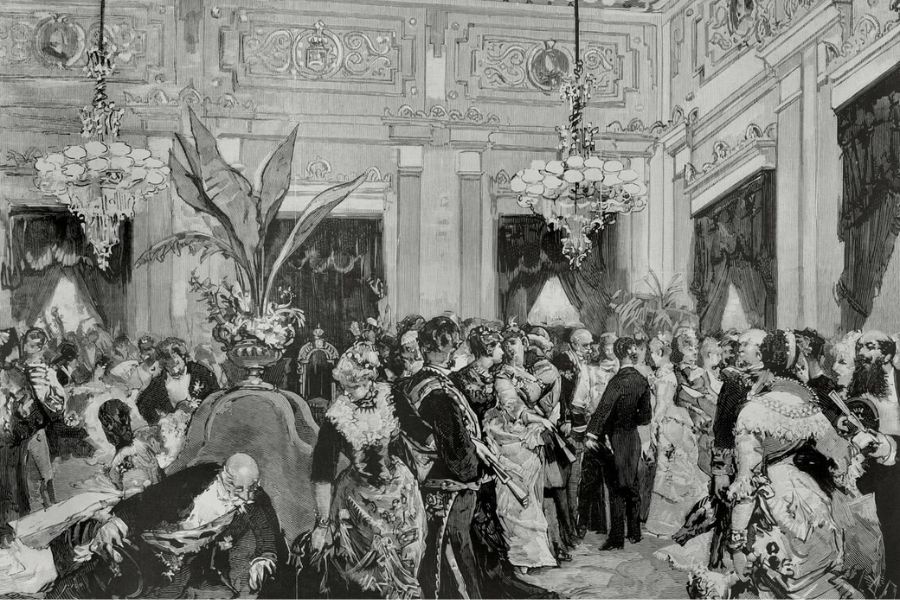
If you plan to visit during festival season, grab your tickets early. It’s worth it.
Artistic Connections: Prado Museum and Modern Art Influences
Úbeda and Baeza connect to Spain’s artistic heart, including the legendary Prado Museum in Madrid. Artists tied to the Renaissance in these towns have works or influences at the Prado.
For example:
| Artist | Connection to Úbeda/Baeza | Featured at the Prado |
|---|---|---|
| Andrés de Vandelvira | Designed local landmarks | Influenced Spanish art |
| El Greco | Inspired by Renaissance | Paintings in the Prado |
Modern artists, drawn by the towns’ light and architecture, keep finding new inspiration here. Local galleries often blend Renaissance style with modern art.
I stopped by a small exhibit where young painters showed off pieces that mixed historical themes with bold, contemporary techniques. Even a quick visit to a gallery or museum gives you a sense of how the past keeps shaping Spain’s art scene.
Cultural Traditions and the Spirit of Andalucía
Every step through Úbeda and Baeza brought me closer to Andalucía’s living heritage. Ancient festivals and lively local markets still shape the region’s character today.
Festivals, Collective Memory, and National History
I happened to visit during spring, just in time for Semana Santa (Holy Week). The streets transformed with processions, music, and traditional dress.
Locals of all ages joined in, keeping centuries-old rituals alive. I got swept up in the emotion and pride that come from shared memory.
Local festivals like the Virgen de Guadalupe celebration blend sacred and festive events, showing off that Andalusian knack for mixing faith, art, and joy. Storytelling and flamenco music echoed through courtyards.
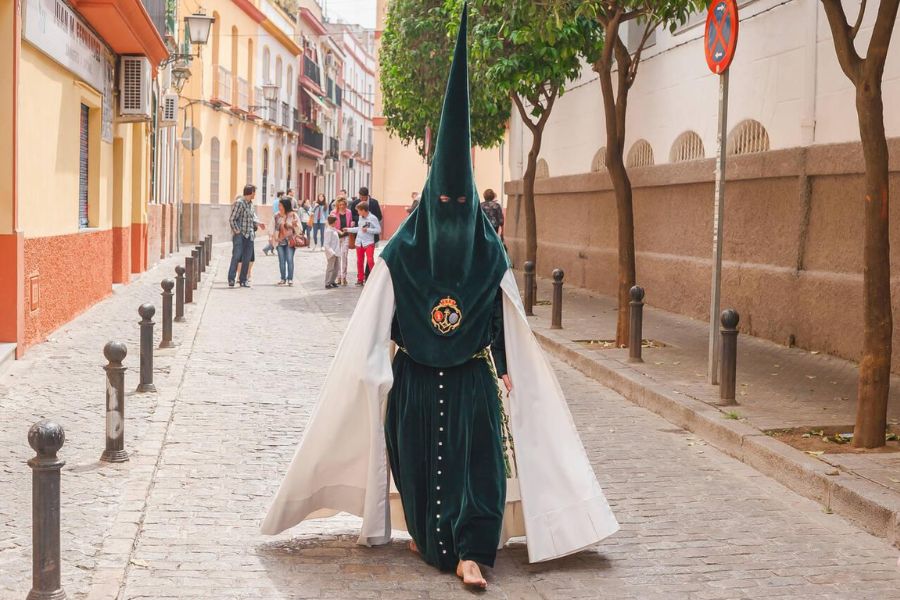
These aren’t just performances—they’re threads in a much older tapestry. Every song and dance carries pieces of national history and a sense of belonging that’s hard to miss.
Commerce and the Transformation of Local Life
As I walked the cobbled streets, I saw old trades like pottery and olive oil production still thriving. Small shops and family workshops dotted the town.
The walls seemed to tell stories of trading routes and travelers who once brought new ideas, weaving them into the local fabric. Tourism and the demand for local products have sparked new markets.
While I browsed hand-painted ceramics, I chatted with artisans whose families had spent generations perfecting these crafts. These little exchanges showed me how commerce in Úbeda and Baeza balances tradition with change.
The old squares now buzz with a mix of local business and foreign curiosity. There’s a quiet pride in Andalucía’s ability to honor its past while adapting to the present.
From Science to Scholarship: Knowledge, Translation, and the Renaissance Mind
As I wandered through Úbeda and Baeza, I realized the Renaissance spirit touched every corner—not just the arts. These cities hold stories of mathematical breakthroughs, pioneering astronomers, advanced medical ideas, and scholars who brought ancient wisdom into new languages.
Mathematics, Astronomy, and the Dawn of the Scientific Revolution
Standing by the intricate facades in Úbeda, I pictured the minds of the 1500–1700s wrestling with numbers and the stars above. Mathematics wasn’t just theory; it shaped architecture, city planning, and art.
Calculating domes and plazas demanded geometry, much of it drawn from ancient Greek and Islamic texts that Spain rediscovered. Astronomers in early modern Spain made bold observations and charted stars and planets, feeding into the wider Scientific Revolution.
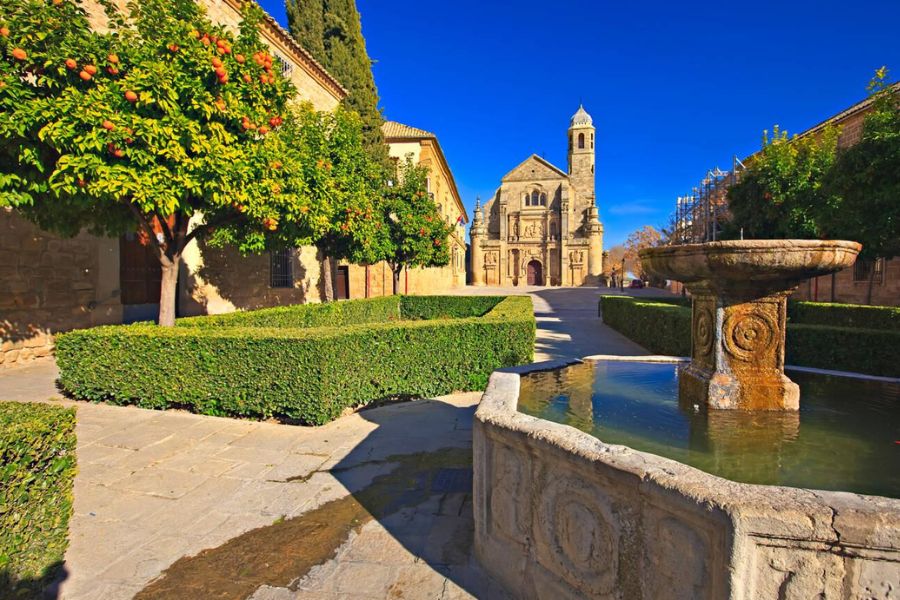
Ideas from Copernicus, Galileo, and Spanish thinkers slipped into classroom debates and even cathedral conversations. I caught hints of this curiosity in local museums and plazas, where old sundials still keep time by watching the sky.
Translation, Historiography, and Sources of Early Modern Spain
The Renaissance spirit here thrived on translation. Scholars took texts from Greek, Arabic, and Hebrew, turning them into Latin or Spanish.
This work opened doors to new ideas in philosophy, science, and theology. In Baeza, people gathered in plazas to debate history and science, using freshly translated books as their sources.
These efforts built a unique historiography for early modern Spain, letting the world see a broader view of global learning. I really love how every corner hints at the cross-cultural scholarship that once flourished here—and still shapes the stories locals tell.
Medicine, Geometry, and Natural Phenomena
Old stone hospitals in Úbeda prove that medicine mattered during the Renaissance. Doctors drew on ancient Greek and Islamic ideas, now available in Spanish.
They watched natural phenomena—how wounds healed, how diseases spread—and began relying on reason and evidence, not just tradition. Geometry popped up everywhere, from street layouts to cathedral windows.
These designs weren’t just for looks; they showed a grasp of proportions, space, and even acoustics. As I wandered the plazas, I pictured scholars arguing about eclipses or how the human body worked, using math to explain nature’s mysteries.
Curiosity and calculation still shape how these cities frame the sky and organize their streets.
Legends, Chronicles, and Encounters with the Past
Walking through Úbeda and Baeza, I felt history layered in every plaza, stone arch, and winding alley. The past comes alive in well-told tales, encounters with distant lands, and the beauty of the landscape.
Medieval Narratives and the Chronicles of the Spanish Reconquest
In these towns, stories from the medieval era seem to echo everywhere. Towers and ramparts remind me of when Christian and Muslim rulers fought over this land.
The chronicles describe how Baeza’s Cathedral once served as a mosque, later turning into a symbol of Christian victory during the Spanish Reconquest. Every plaza seems to whisper tales from that time.
One morning, I wandered past statues of knights and read plaques marking big events from the 13th century. I couldn’t help picturing the town’s audience in 1233, when King Ferdinand III took back Baeza.
The layout, all narrow and twisting, still follows the pattern set up in those turbulent days. I enjoy how history isn’t just locked away in museums.

Guided walks bring these medieval narratives to life, retelling moments like the expulsion of the Moors and the rise of local noble families. It’s easy to feel connected to those old chronicles while standing right where they happened.
Encounters with Genghis Khan and the History of the Tyrants of Sicily
Úbeda and Baeza might feel far from Mongolia or Sicily, but their history ties them to the wider world. In the 13th century, news of Genghis Khan’s armies swept across Spain, sparking rumors and fear in these towns.
Chronicles from that era mention local leaders getting ready for invasions that never arrived. Another story that grabbed my attention comes from the “history of the tyrants of Sicily.”
Spanish nobles kept an eye on Sicily’s rulers during the medieval period, since whoever controlled the Mediterranean held the keys to trade and security—even here in Andalusia. I listened to a guide talk about local ties to Sicilian power struggles, looping back to 1605, when Spanish influence peaked around the Mediterranean.
Hearing these stories while staring at family crests on palace walls made the world feel both bigger and smaller. Even quiet Andalusian towns connected to great dramas happening far away.
Connections with Towns of Italy and the Classical Period
Renaissance architects in Úbeda and Baeza drew huge inspiration from Italian towns. I noticed the similarities while walking along streets lined with pale stone palaces, tall arched doorways, and geometric plazas.
Some plazas reminded me of Florence or Siena, though with a local twist. During the 16th century, Spanish artists and builders traveled to Italy, studied, and brought back fresh ideas.
In 1885, restorers uncovered treasures hidden in the oldest churches—Roman columns, mosaics, and sculptures that hinted at earlier Roman influence. These details link Úbeda and Baeza to the classical world and the great periods of Italian art.
Each stroll felt like stepping back to the Renaissance. When I visited the Church of San Pablo, I found a list of Italian stonemasons carved into the wall, proof of just how tightly Andalusia and Italy connected during this golden age.
Every corner seemed to offer a small piece of the classical period, inviting me to spot those links for myself.
Flora and Fauna: Experiencing the Living Landscape
When you leave the monuments behind, you’ll find that Úbeda and Baeza sit among a patchwork of olive groves, wildflowers, and birdsong. The landscape feels alive, shaping how people live and how history unfolds here.
In spring, I wandered down quiet lanes, passing almond trees bursting with blossoms. Butterflies darted between the old city walls, like they owned the place.
Evenings brought a cool breeze, sometimes heavy with the scent of rosemary and thyme. I’d sit on a sunny terrace, sipping coffee and watching hoopoes, storks, and goldfinches flit past—honestly, it’s hard not to feel a little jealous of their freedom.
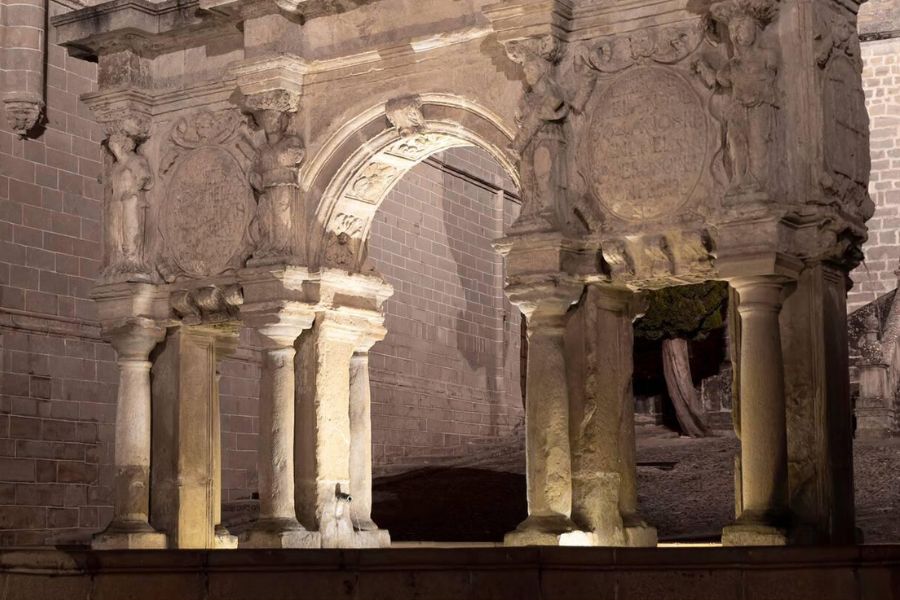
These creatures have made these hills their home for ages, weaving their own stories into the towns’ long past. It’s a reminder that nature and history keep overlapping here.
Notable flora and fauna I saw:
| Flora | Fauna |
|---|---|
| Olive trees | Hoopoes |
| Almond blossoms | Storks |
| Rosemary & thyme | Goldfinches |
| Wildflowers | Swallows |
Walking through this landscape, I couldn’t help but feel a connection to something old and ongoing. Even the olive oil at breakfast tasted like the land’s history—rich and a little wild.

